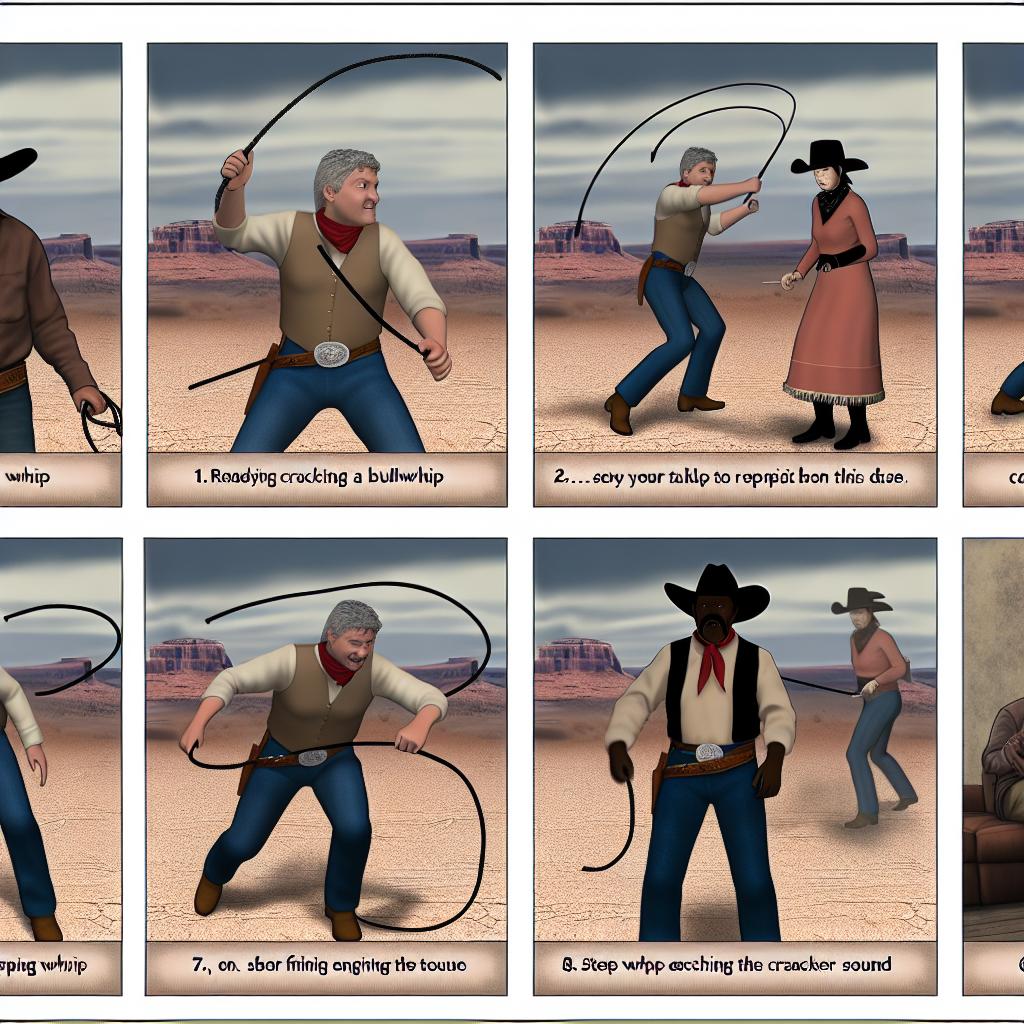
Common techniques for cracking a bullwhip.
Understanding Bullwhip Cracking Techniques
When exploring the art of cracking a bullwhip, it’s essential to understand both the physics behind the practice and the various techniques employed by professionals. Bullwhips have long fascinated individuals because of their unique ability to create a sonic boom—an effect that occurs when the tip of the whip breaks the sound barrier. Below, we discuss some of the common techniques for cracking a bullwhip.
The Basic Forward Crack
The forward crack is often the first technique beginners learn. It involves a straightforward motion that produces a satisfying crack. The whip holder begins with the handle in an upward position and the whip trailing behind. By flicking the wrist forward and downward with a well-timed stopping motion, the whip’s tip breaks the sound barrier, resulting in a crack.
This technique relies on the principle of angular momentum. The user must transfer the energy from the body, through the arm and wrist, into the whip, ensuring that the tip of the whip achieves a speed greater than the speed of sound. Coordination and timing are essential in executing a successful forward crack. Practicing the fluidity of motion can significantly enhance the efficacy of this technique.
The Overhand Flick
The overhand flick is another fundamental technique. It requires the user to utilize an overhand motion akin to throwing a ball. The performer grasps the handle vertically and, after a quick lift and jerk of the wrist downward, the whip cracks as it completes its arching trajectory. This technique demands precision, as the downward flick must be executed at the precise moment for the tip to achieve the necessary speed.
This crack is particularly useful in scenarios where a quick, forceful action is desired. The overhand flick can be seen as a progression from the basic forward crack, offering more versatility and power. With practice, users can experiment with the angle and force of the motion to achieve their desired effect.
The Sidearm Crack
In the sidearm crack, the whip is swung to the side in a horizontal plane. The practitioner holds the whip out to their side and performs a flick with a small loop, letting the whip unfurl in a horizontal path. This technique highlights the flexibility of the wrist and arm, resulting in a clear crack.
The sidearm crack is particularly useful for scenarios requiring precision in a lateral direction, and it’s often used in staged performances to sweep across a broad visual plane. This technique also emphasizes the importance of wrist flexibility and control. Practitioners often start slowly and gradually increase speed as they become more comfortable with the motion involved.
The Cattleman’s Crack
The Cattleman’s crack is named for its common use by cattle handlers. It involves a two-part motion, starting with a backward flick to build tension. Once the whip is properly aligned, a forward motion results in a crack. This technique is practical and often used in herding situations, where the precise direction and power can influence the herd’s movement.
The Cattleman’s crack teaches whip handlers the importance of tension management and how the preloading motion sets up the whip for a successful crack. This method is advantageous when working from different angles, allowing one to maintain control over the whip’s trajectory and impact point.
The Coachman’s Crack
Though less common among beginners, the Coachman’s crack is a visually appealing technique. It involves making a circular motion above the head, allowing the whip to gain momentum before being snapped downwards. It’s often used in performances to demonstrate control and fluidity.
The circular motion allows for the accumulation of significant kinetic energy, which, when executed correctly, results in a dramatic crack. This technique also requires the practitioner to manage centrifugal forces while maintaining the whip’s alignment to ensure optimal performance.
Practicing Safe Whip Cracking
While mastering these techniques can be rewarding, safety should always remain a priority. Practicing in open spaces, wearing appropriate protective gear, and maintaining awareness of surroundings are essential to avoid injury. Beginners should take precautions to ensure they do not injure themselves or bystanders while practicing.
Those interested in advanced guidance can consider professional lessons or workshops, which provide hands-on training with expert feedback. Not only do such sessions offer tailored advice to improve technique, but they also emphasize safe practices in a controlled environment.
For those seeking further resources to improve their bullwhip skills, specialized forums and communities dedicated to whip enthusiasts can offer valuable insights and support. These groups often share tips and tutorials to enhance technique and safety practices. Engaging with fellow enthusiasts allows practitioners to exchange ideas, discuss challenges, and celebrate progress in a supportive network, fostering a deeper understanding of the art of bullwhip cracking.
Moreover, these communities often organize events and gatherings where individuals can showcase their skills and learn from others, furthering their passion and mastery in the art of bullwhip cracking.